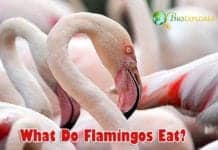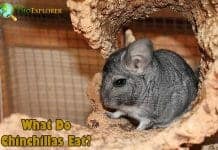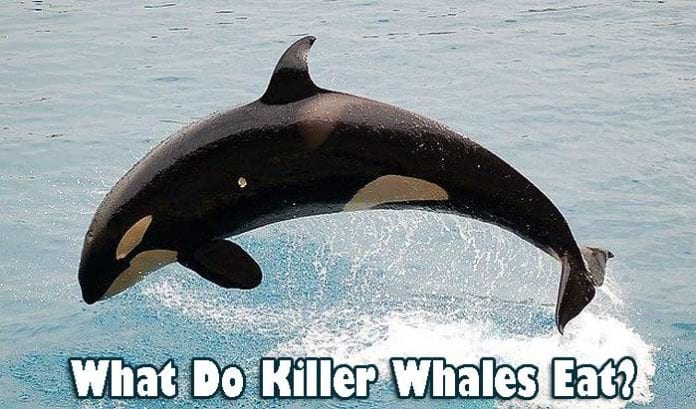
What Do Killer Whales Eat? Killer Whales, also referred to as orcas, are sea mammals, and they are the largest of dolphins. They are also considered to feature in the list of the largest predators in the world.
Killer whales are generalist carnivores. They tend to eat fish, penguins, turtles, and marine mammals with examples of whales, dolphins, sea lions, walruses and seals.
Table of Contents
What Do Killer Whales Eat?
| Resident Orca | A wide array of fish species including cod, mackerel, halibut, and salmon. |
| North Atlantic Type 2 Orca | Dolphins and minke whales |
| Pack Ice Orca | Seals |
| Type D Orca | Various fish species |
![]()
Killer Whales Diet by Types
Killer whales are considered to be just one species. Interestingly, with the expansion of research in killer whales, scientists have discovered different forms of these marine mammals.
These forms are referred to as ecotypes, and they vary depending on their appearances, diets, social groups, behaviors, social groups, and foraging techniques.
Further, the ranges occupied by these ecotypes overlap. Interestingly, the members of the different ecotypes are genetically distinct.
Marine biologists have categorized the orca ecotypes as those found in the northern hemisphere and those found in the southern hemisphere.
This section will sample out 4 of the 10 killer whale forms that biologists have described.
| Animalia | Cetacea | Delphinidae | Orcinus | Orcinus orca |
What Do Resident Orcas Eat?
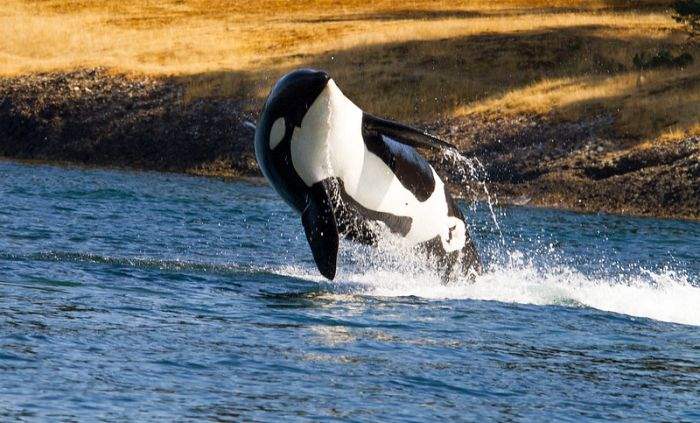
- These orcas get their names because they form home ranges around those areas with large fish concentration.
- The resident orcas are found on both sides of the North Pacific Ocean.
![]()
What Do North Atlantic Type 2 Orcas Eat?
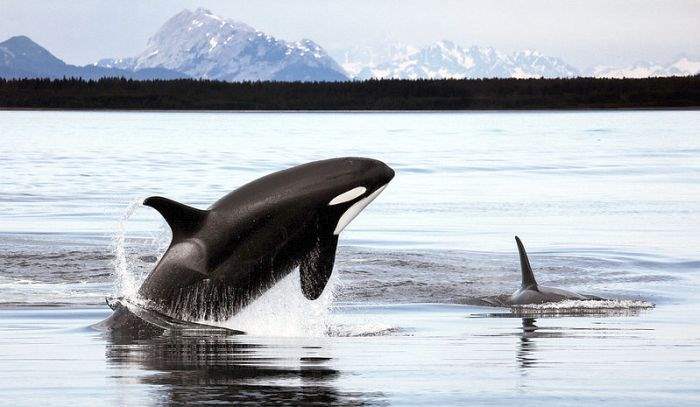
- The North Atlantic orcas come in two forms, Type 1 and the other is Type 2.
- The members North Atlantic’s Type 2 ecotype of orcas are morphologically distinct from their Type 1 counterparts, especially when looking at their size and teeth.
- North Atlantic Type 2 orcas are larger compared to their Type 1 relatives, and their teeth do not wear.
![]()
What Do Pack Ice Orcas Eat?
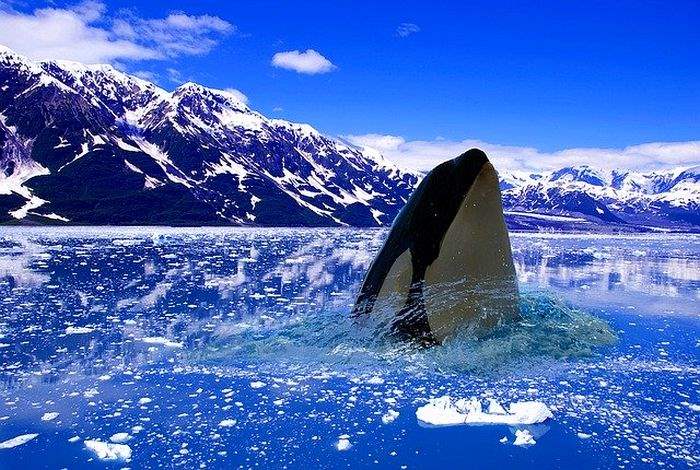 Pack ice orcas feed on seals found on loose packs of ice.
Pack ice orcas feed on seals found on loose packs of ice.
- This ecotype is found in the southern hemisphere and is also referred to as Type B (more significant) orca.
- They appear yellow thanks to diatoms growing on their skin.
![]()
What Do Type D Orcas Eat?
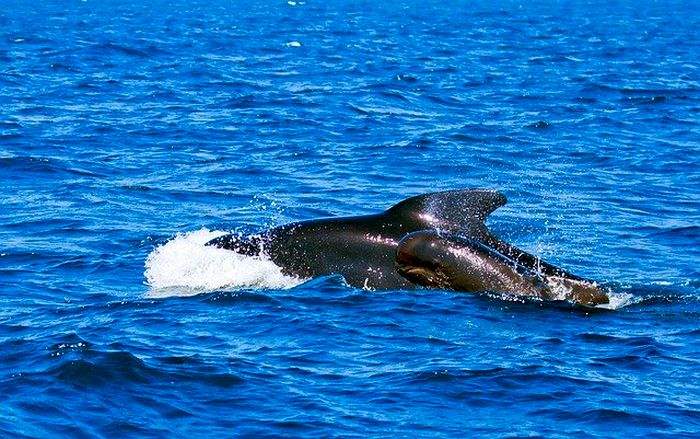 Type D orcas mainly feed on fish.
Type D orcas mainly feed on fish.
- These are the newest form of orcas discovered by scientists.
- Type D orcas are several feet shorter compared to other orcas.
- Killer whales inhabit all oceans.
- They are most abundant in colder waters like those found in Alaska, Antarctica, and Norway.
- Type D orcas are also found in tropical and subtropical waters.
![]()
How Do Killer Whales Hunt?
Hunting in packs is the norm for killer whales.
- A unique hunting strategy they use to get their prey is wave hunting. This technique is commonly evidenced among pack ice orcas.
- A pack of this form of orcas would swim towards a target (often seals) on a loose ice pack, creating a wave beneath the ice pack.
- This scenario swamps the ice, leaving a potential kill vulnerable to the pack.
![]()
When Do Killer Whales Eat?
In the wild, killer whales are neither nocturnal nor diurnal.
- Their activity is pretty much determined by the activity of their prey. As such, when killer whales feed or rest is dependent on their prey and how they are tired.
![]()
How Often Do Killer Whales Eat?
Because they spend most of their energy swimming and hunting for their prey, killer whales tend to eat very often. They also eat a significant amount of food per day. These marine mammals consume about 375 pounds of food per day.
![]()
What Eats Killer Whales?
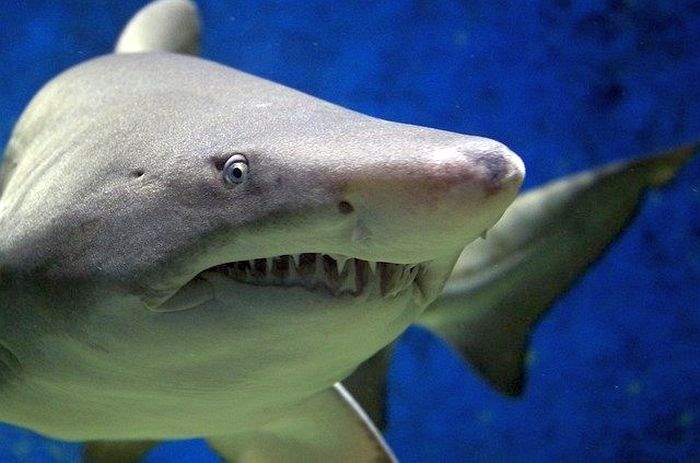 Adults killer whales do not have a natural predator, given that they are at the apex of their ecosystems.
Adults killer whales do not have a natural predator, given that they are at the apex of their ecosystems.
- Younger orcas can, however, be predated upon by other orcas or by larger sharks.
- Humans may also kill orcas for their oil and meat.
![]()
Where Do Killer Whales Fit in the Animal Food Chain?
Killer whales play an essential role in the animal food chain. They impact populations of the organisms they feed on, such as seals, a vast range of fish, and sea lions. Killer whales are also an important food source for organisms that hunt them down.
![]()
Cite This Page
Key References
- “Mysterious new orca species likely identified”. Accessed November 09, 2019. Link.
- “Meet the different types of orcas – Whale & Dolphin Conservation USA”. Accessed November 09, 2019. Link.
- “Resident and Transient Orcas | Port Townsend Marine Science Center”. Accessed November 09, 2019. Link.
- “BBC – Earth News – Two killer whale types found in UK waters”. Accessed November 09, 2019. Link.
- “Type B Killer whales: ongoing Evolution in Antarctica”. Accessed November 09, 2019. Link.
- “Watch Video of Type D Killer Whales, Rarely Seen by Humans – The New York Times”. Accessed November 09, 2019. Link.
- “Killer Whales: Feeding”. Accessed November 09, 2019. Link.
- “ADW: Orcinus orca: INFORMATION”. Accessed November 09, 2019. Link.



